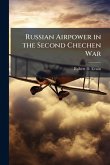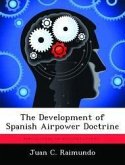The battle between British and German air forces in the summer and early fall of 1940 was the first major campaign fought entirely by air. It engendered interest among airmen around the world, especially American observers who sought to learn what they could about war in the third dimension. Amidst an array of air activities and operations, the American observers identified pertinent airpower lessons, analyzed them in a meaningful way, and interpreted them for implementation within the Air Corps. In this task, they used the doctrine of strategic bombardment to filter and interpret the Battle of Britain. This doctrine conditioned how they ordered and categorized the vast amounts of battlefield data and information, and virtually ensured their view that the Battle of Britain was lost by Germany's failure to bomb well, and not won by the Royal Air Force's capacity for fighter defense. The observations and assessments of the American airmen reveal how doctrine has the potential to not only help, but also hinder how airmen interpret the battlefield. Ultimately, the observers' experience highlights the importance of thinking clearly and cleanly about military doctrine, to understand what it does for military organizations, and what it does to them. This work has been selected by scholars as being culturally important, and is part of the knowledge base of civilization as we know it. This work was reproduced from the original artifact, and remains as true to the original work as possible. Therefore, you will see the original copyright references, library stamps (as most of these works have been housed in our most important libraries around the world), and other notations in the work. This work is in the public domain in the United States of America, and possibly other nations. Within the United States, you may freely copy and distribute this work, as no entity (individual or corporate) has a copyright on the body of the work. As a reproduction of a historical artifact, this work may contain missing or blurred pages, poor pictures, errant marks, etc. Scholars believe, and we concur, that this work is important enough to be preserved, reproduced, and made generally available to the public. We appreciate your support of the preservation process, and thank you for being an important part of keeping this knowledge alive and relevant.
Bitte wählen Sie Ihr Anliegen aus.
Rechnungen
Retourenschein anfordern
Bestellstatus
Storno








